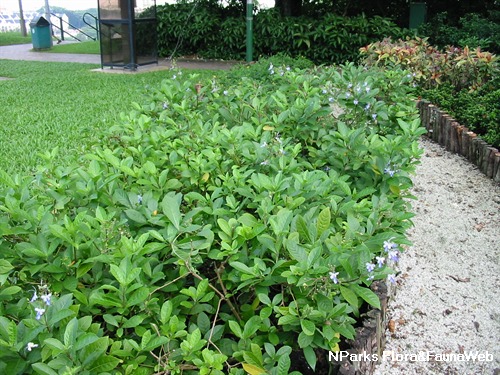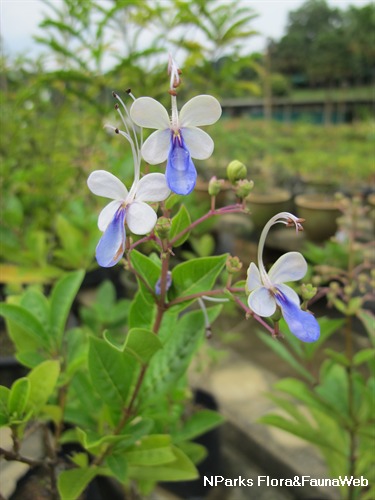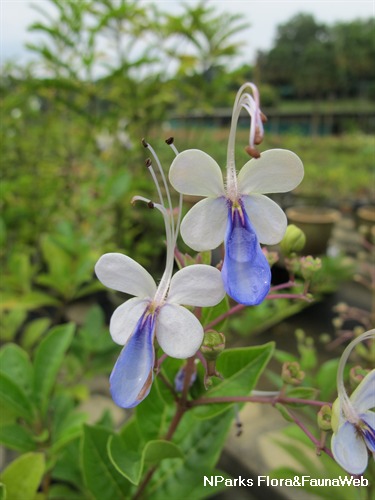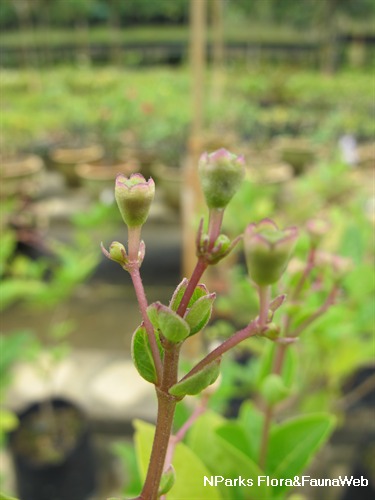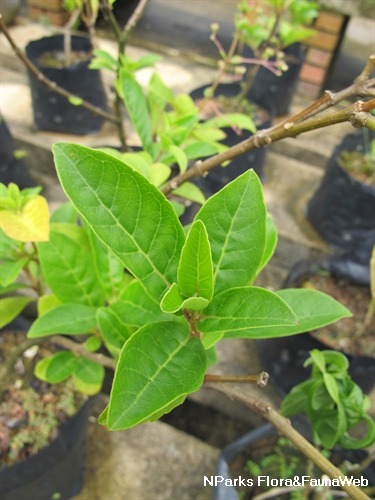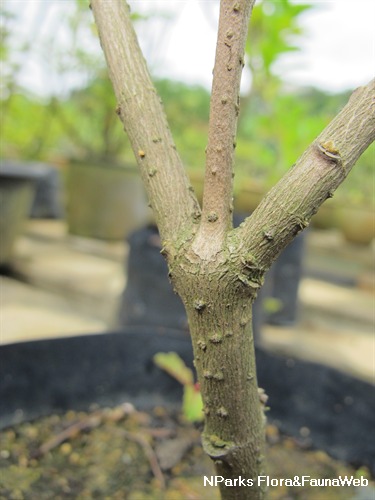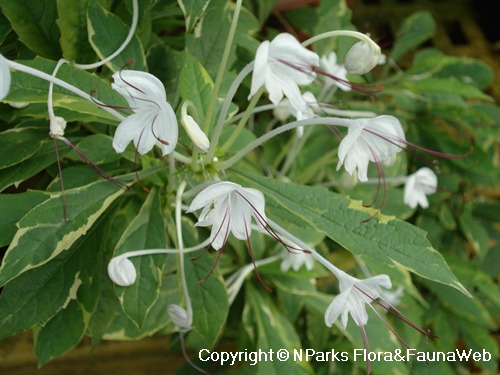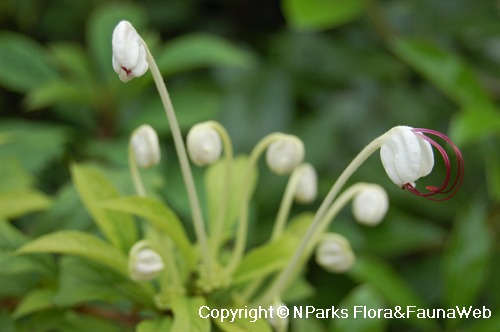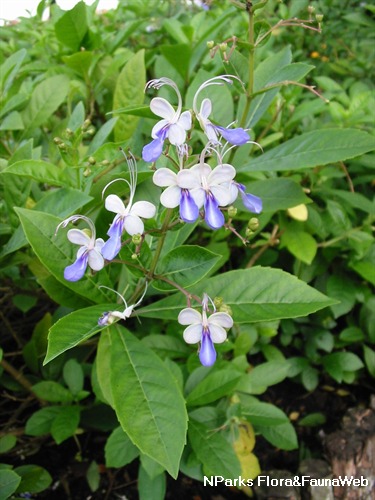
Back
Rotheca myricoides (Hochst.) Steane & Mabb. 'Ugandense'
| Family Name: | Lamiaceae (Labiatae) |
| Synonyms: | Acrymia myricoides, Siphonanthus , Cyrtostemma , Cyrtostemma , Cyclonema |
| Common Name: | Blue Butterfly Bush, Blue Glory Bower, Blue Oxford Bush, Blue Cambridge Bush |
21 Nov 2025 (James/Pauline) added species growth rate, marked as moderate
Name
Classifications and Characteristics
| Plant Division | Angiosperms (Flowering Seed Plants) |
|---|---|
| Plant Growth Form | Shrub |
| Lifespan (in Singapore) | Perennial |
| Mode of Nutrition | Autotrophic |
| Maximum Height | 2 m to 3 m |
| Maximum Plant Spread / Crown Width | 2 m to 3 m |
Biogeography
| Native Habitat | Terrestrial |
|---|---|
| Preferred Climate Zone | Tropical |
| Local Conservation Status | Non-native (Horticultural / Cultivated Only) |
Description and Ethnobotany
| Growth Form | Woody evergreen shrub that reaches 1.8-2.7 m tall. |
|---|---|
| Foliage | Leaves are elliptic with serrate leaf margin. Crushed leaves emit a pungent odour. |
| Flowers | Flowers resemble butterflies, having 4 white to light blue, lateral petals and 1 blue to purplish blue, downward-pointing petal. The long, white to bluish stamens arch over the petals and serve as a landing platform for insect pollinators. Flowers are arranged in branched inflorescences known as panicles and are located at the branch tips. |
| Fruit | Dry fruits are known as schizocarps. |
| Cultivation | This fast-growing cultivar is easy to grow. Prune the plants to maintain a bushy shape and promote flowering. It is resistant to most pests. |
| Etymology | The genus name "Rotheca" is a Latin version of small teak in the Malayalam language (a major language spoken in southern India). The cultivar name "Ugandense" is derived from the German name of Rotheca myricoides ("Uganda-Losstrauch"). |
Landscaping Features
| Desirable Plant Features | Ornamental Flowers |
|---|---|
| Landscape Uses | Flowerbed / Border, Focal Plant, Container Planting, Pest-Repellent Plant |
| Usage Hazard - Cons | Toxic Upon Ingestion |
Fauna, Pollination and Dispersal
| Fauna Pollination Dispersal Associated Fauna | Butterfly-Attracting (Flower Nectar), Bee-Attracting |
|---|
Plant Care and Propagation
| Light Preference | Full Sun, Semi-Shade |
|---|---|
| Water Preference | Moderate Water |
| Plant Growth Rate | Moderate |
| Rootzone Tolerance | Well-Drained Soils, Fertile Loamy Soils |
| Propagation Method | Seed, Stem Cutting |
Foliar
| Mature Foliage Colour(s) | Green |
|---|---|
| Leaf Area Index (LAI) for Green Plot Ratio | 4.5 (Shrub & Groundcover - Dicot) |
Floral (Angiosperm)
| Flower Colour(s) | Purple, Blue |
|---|
Image Repository
Others
| Master ID | 529 |
|---|---|
| Species ID | 1825 |
| Flora Disclaimer | The information in this website has been compiled from reliable sources, such as reference works on medicinal plants. It is not a substitute for medical advice or treatment and NParks does not purport to provide any medical advice. Readers should always consult his/her physician before using or consuming a plant for medicinal purposes. |

